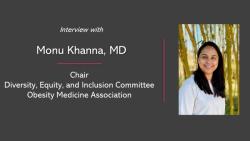© 2025 MJH Life Sciences™ , Patient Care Online – Primary Care News and Clinical Resources. All rights reserved.
Filling Gaps in Hypertension Rx: Sleep Disorders and Stroke
ASH 2013 has uncovered 2 glaring gaps in the management of people with sleep disorders (OSA as well as others) and appropriate care after a stroke. Both cohorts frequent primary care practice.
What did I know before ASH 2013?
Obstructive sleep apnea is a disease that is comprised of more than sleep disordered breathing. It is a serious vascular disease in disguise. Eighteen million people in America are afflicted with it.
I know a lot more about OSA now. In 98% of people with OSA, the condition is undiagnosed! OSA is atypical and harder to diagnose in women. Women do not snore, may have serious disease with a normal neck circumference and BMI. If OSA is diagnosed, it improves with CPAP (a minimum of 4 hours per night!).
I asked all the right questions and ordered sleep studies. I looked for OSA in my resistant hypertensive patients.
But what was I missing?
There are 80 million people in the US with sleep deprivation. They may be more subtle, but also have an increased risk of DM2, heart disease, other medical problems, and chronic pain. They have blood pressure issues as well. My "sleep review of systems" was inadequate. Remember, there are only 3500 sleep specialists in America. Primary care is going to have to shoulder a greater burden. People who have trouble sleeping have a higher risk of vascular problems.
Before ASH, I thought we were doing a good job with care after strokes too. There is no doubt it is an important assignment. There are approximately 795,000 strokes per year in America. One quarter are recurrent. Fifteen to thirty percent of survivors are disabled. Twenty percent of these folks require institutional care for 3 months after the event.
Would it surprise you to learn -- if you compare lipid, blood pressure, antithrombotic therapy, exercise, and dietary interventions -- that after an ischemic coronary event, survivors fare better than stroke survivors?! Secondary prevention strategies in stroke survivors are not as good as they should be. If patients have a coronary procedure and are compared to patients who have undergone a carotid endarterectomy, again followup is better in the coronary cohort.
ASH 2013 has uncovered 2 glaring gaps in the management of people with sleep disorders (OSA as well as others) and appropriate care after a stroke. Both cohorts frequent primary care practice. It does not seem anyone is volunteering to jump into these breeches. Are we ready, willing, and able?
Related Content:


